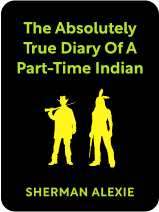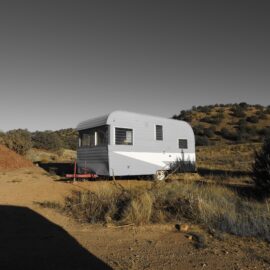

This article is an excerpt from the Shortform summary of "The Absolutely True Diary of a Part-Time Indian" by Sherman Alexie. Shortform has the world's best summaries of books you should be reading.
Like this article? Sign up for a free trial here .
What is The Absolutely True Diary of a Part-Time Indian setting? How does the setting change how Junior sees himself and his future?
In The Absolutely True Diary of a Part-Time Indian, setting is important as Junior goes from the reservation to a new school in a nearby town. This experience causes him to question his identity, while also learning to believe in himself.
Keep reading to find out more about The Absolutely True Diary of a Part-Time Indian setting.
The Absolutely True Diary of a Part Time Indian Setting: Welcome to Spokane
The Absolutely True Diary of a Part-Time Indian setting is the reservation where Junior grew up. 14-year-old Junior lives in Wellpinit, Washington, a small town on the Spokane Indian Reservation, known to residents as “the rez.” Junior describes the rez as “located approximately one million miles north of Important and two billion miles west of Happy.” Reservations like Spokane’s were created in the image of death camps. Junior speculates that the government hoped Indians would go there, die out, and disappear. But the Spokane tribe didn’t disappear, and now tribe members stay of their own free will. They’re born on the rez and they die on the rez. No one ever leaves.
The rez is characterized by the poverty and alcoholism of its residents. But the rez is also an extended family—everyone knows each other and comes together in times of need.
This doesn’t mean that life on the rez is always peaceful. As happens in communities where everyone knows everyone else’s business, disagreements are frequent, and there are unofficial rules for handling conflict and defending your honor.
Spokane Rules of Fisticuffs
In The Absolutely True Diary of a Part-Time Indian, setting is important since it helps establish what Junior’s life on the reservation is like. Below, Junior outlines life in Wellpinit.
1. You have to fight anyone who insults you.
2. You have to fight anyone you think is going to insult you.
3. You have to fight anyone you think is thinking about insulting you.
4. You have to fight anyone who insults your family, anyone you think is going to insult your family, or anyone you think is thinking about insulting your family.
5. You shouldn’t fight a girl unless she insults you or someone in your family.
6. If an adult beats up your mom or dad, you have to fight that person’s son or daughter.
7. If one of your parents beats someone up, that person’s child has to fight you.
8. You have to fight the kids of people who work for the Bureau of Indian Affairs.
9. You have to fight any white kids who live on the reservation.
10. You have to throw the first punch if you’re in a fight with someone stronger than you. (It’s the only punch you’ll have the chance to throw.)
11. The person who cries first is always the loser.

———End of Preview———
Like what you just read? Read the rest of the world's best summary of Sherman Alexie's "The Absolutely True Diary of a Part-Time Indian" at Shortform .
Here's what you'll find in our full The Absolutely True Diary of a Part-Time Indian summary :
- How Junior gets split between two worlds when he goes to a mostly white school
- How Junior overcomes being an outsider to being part of welcoming social circles
- The tragedies of alcoholism and poverty that leave Junior with renewed strength






